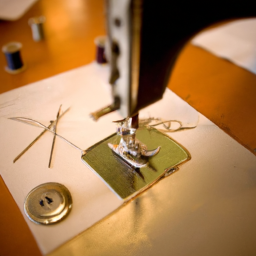
The History of Sewing
Throughout human history, sewing has played a critical role in society, serving as a practical skill and an art form. From the earliest known needles made from bone, to automated sewing machines of the modern era, the history of sewing is a testament to human ingenuity and creativity.
The Beginnings

The origins of sewing can be traced back thousands of years. The earliest evidence of sewing comes from the Upper Paleolithic era, around 30,000 BCE. Archaeologists have found bone needles used by early humans to sew together animal hides for clothing and shelter.
Industrial Revolution and the Sewing Machine

The 19th century brought significant advancements in sewing technology. The Industrial Revolution transformed the textile industry, making sewing faster and more efficient. In 1790, English inventor Thomas Saint developed the first sewing machine, though it was not widely adopted. It wasn’t until the mid-19th century that sewing machines gained popularity with the invention of the lockstitch mechanism.
Sewing in Fashion and Everyday Life

As sewing technology improved, so did the fashion industry. Sewing allowed garments to be constructed with greater precision and intricate detailing. Haute couture houses emerged, giving rise to iconic fashion designers who showcased their creations on runways around the world.
The 20th Century and Beyond

In the early 20th century, sewing machines became more accessible to the general public. Home sewing machines were introduced, allowing individuals to create their own garments and mend clothing at home. Sewing patterns became widely available, offering a range of designs for people to follow.
Modern advancements continue to revolutionize sewing. Computerized sewing machines with programmable patterns and embroidery capabilities have made intricate designs easier to achieve. Additionally, advancements in fabric technology have expanded the possibilities for sewing and textile arts.
The Art of Sewing Today
While sewing machines have become more prevalent in households, there is still a place for hand sewing and traditional techniques. Sewing continues to be appreciated as an art form, with many individuals practicing it as a hobby or profession. It allows for personal expression, creativity, and the opportunity to create one-of-a-kind pieces.
Conclusion
The history of sewing showcases its importance in human civilization. From the earliest needles to contemporary sewing machines, sewing has shaped how we dress, decorate, and express ourselves. As long as there is a need for clothing and creativity, the art of sewing will continue to evolve and thrive.




